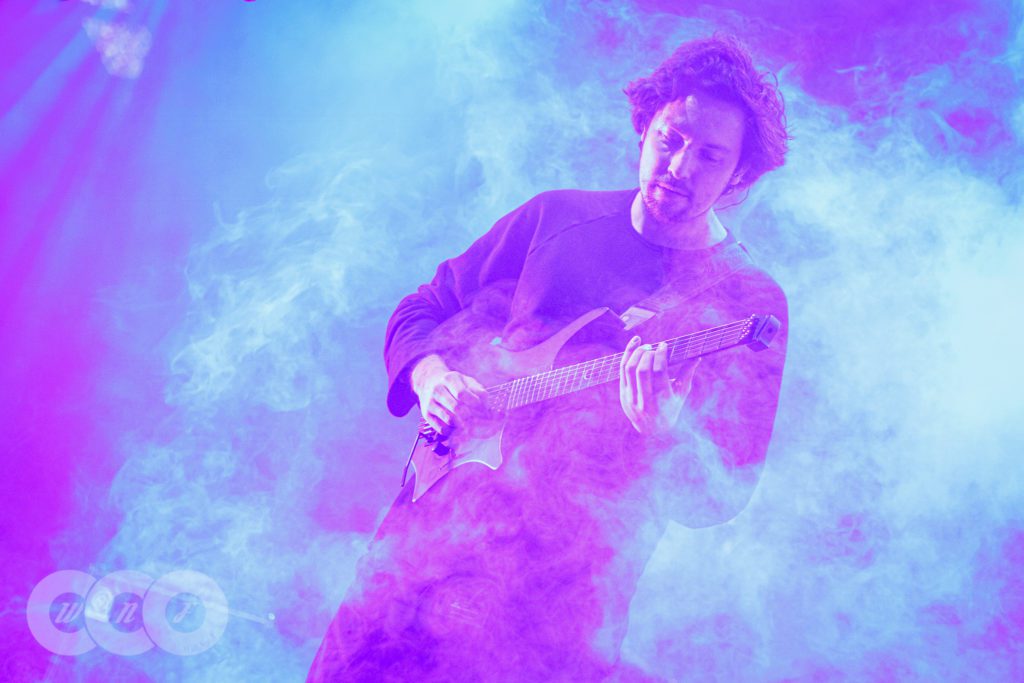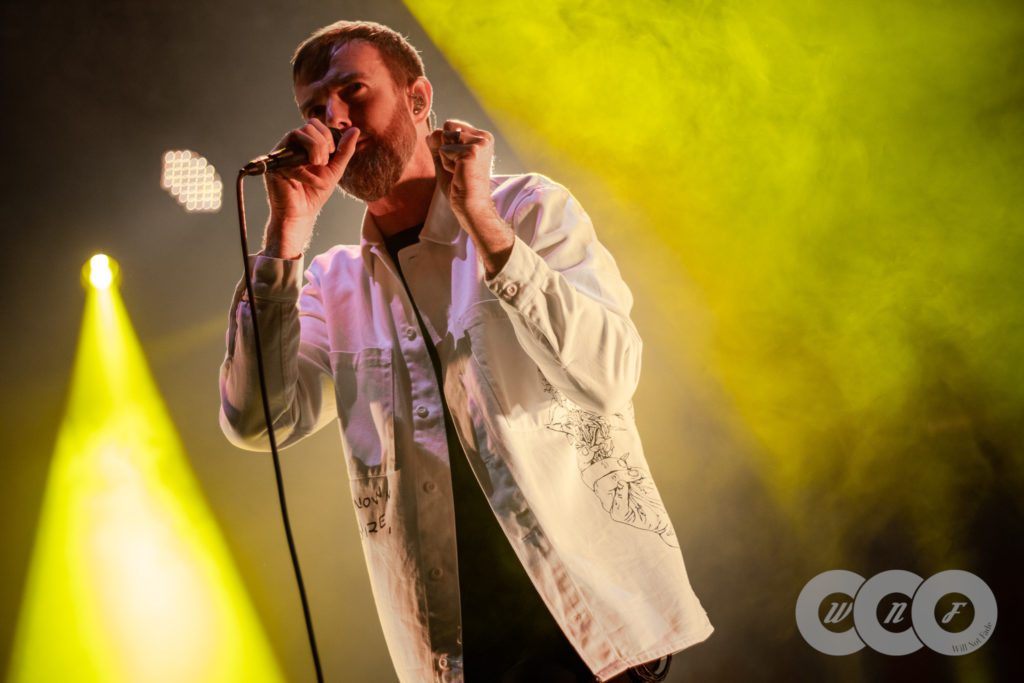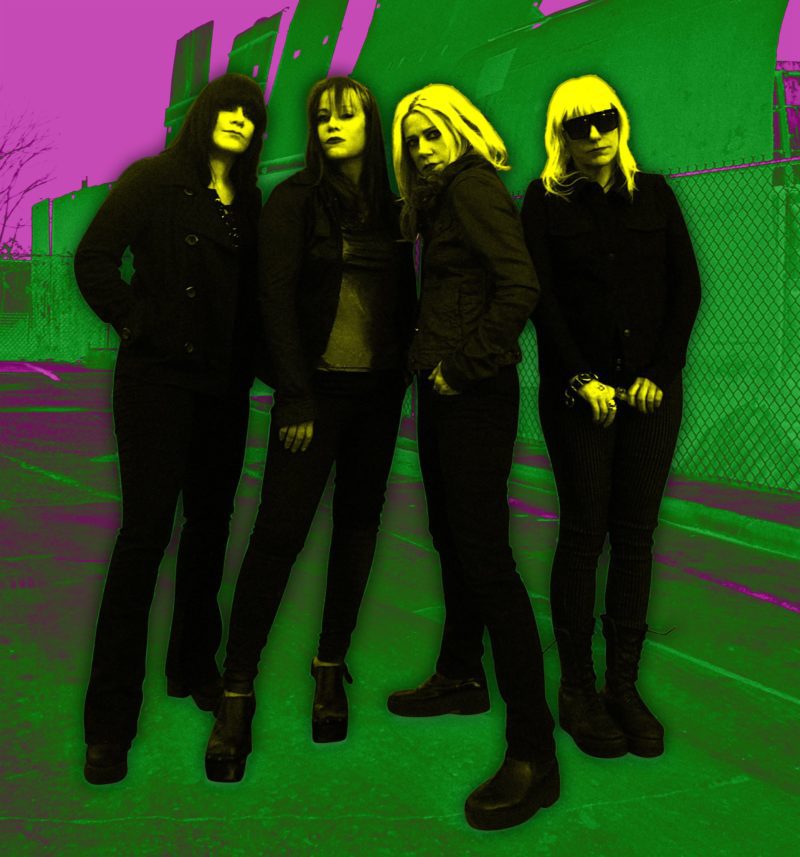Monolith Festival
feat. Karnivool, Cog, Ocean Grove, Plini, sleepmakeswaves, Reliqa, Yomi Ship
PICA, Melbourne
Saturday 26 August 2022
Australia hits well above its weight when it comes to excellent prog-rock and post-rock bands. Belgium does well, possibly because dunk!records is based there. Japan has an incredible scene, especially with the math-rock offshoot. America is obviously well represented, but that’s a given because America is huge and is there anything that they don’t dominate at? But honestly, give me the choice, and I’d most want to see Australian post/prog bands.
Monolith Festival was my chance. When I first saw the announcement I was almost too scared to hope. The lineup seemed too good to be true. Karnivool AND Cog? I’d consider coming over for either one of those acts, let alone both of them together. But this is the time of covid. A time of ruined dreams and cancellations and postponements and lockdowns and all those nasty things a pandemic can cause. It was too risky.
And sure enough, the gigs were postponed. But this worked for me. It meant that it took us to a time beyond extreme border restrictions and mandatory isolation. Travel was viable again. I could afford a glimmer of hope.
I’ve come to Melbourne for gigs a few times in the past: Into It. Over It. and Download Festival. Both were amazing, truly treasured memories. It was time for a hat-trick. Monolith Festival, here we come!
Yomi Ship
I arrived at PICA with my friend Francie half way through Yomi Ship’s set. Navigating Melbourne’s public transport had proven more difficult than anticipated, with some train services being closed for maintenance. PICA – Port Melbourne Industrial Centre for the Arts – was a cool spot. As the name suggests, it was in the port area. It used to be a warehouse of some sort, that had been repurposed as a venue. A bunch of old shipping containers had been converted into bars, and there were a few bars spaces that didn’t look quite so industrial. It was covered in corrugated iron and the walls didn’t come down far, giving it a half open-air feel – like an industrial gazebo of sorts. There was a designated area with picnic tables and an assortment of food trucks, and the obligatory merch tent and portaloos. It was a great set up.
Perth’s Yomi Ship – named after a Yu Gi Oh card – were a trio playing very technical-sounding post-rock. It was fairly laid-back, despite some time-signature changes that bordered on jarring. Melbourne had put on an unexpected beaut of a day, and this dreamy music was wonderful as we enjoyed the sun.
Reliqa
Reliqa is one of the acts I hadn’t heard of before seeing the Monolith line up. I figured I better check out all the acts about a month ago, and was blown away with how much I loved their music. They’ve been on very heavy rotate ever since.
I came in with high expectations, and Reliqa more than delivered. They draw from a range of styles, with elements borrowed from prog-rock, metalcore, djent and and similar alternative styles. They’re a young band, but showed great mastery as musicians and songwriters. Frontwoman Monique Pym stood out especially with her powerful pipes.
Mikey from local metalcore band Gloom in the Corner came on for a guest spot on their latest single “Safety”, with some pretty heavy hardcore vocals. After that the band previewed unreleased material from their forthcoming EP: I Don’t Know What I Am. I tell you what: it’s great music. Uplifting passages, thunderous breakdowns, infectious riffing – I was absolutely lapping it up.
I was very impressed with their set. Note Reliqa down as a band to watch out for.


sleepmakeswaves
Back in 2017 I tagged along with Montana post-rockers Ranges on a two week tour across America. I saw a lot of post-rock bands during those two weeks, especially because the tour involved a few days in Vermont at the inaugural dunk!USA festival. I remember discussing with Ranges guitarist Joey Caldwell what it took for post-rock bands to stand out in a live context. They need either memorable melodies or great energy. Anything less, and they’re just not up to par.
sleepmakeswaves have both. Delicious riffs, interesting effects, great dynamics. And energy! Such energy! I’d seen them open for This Will Destroy You when they came to Wellington in 2015, hot off a three-month long tour. They, well, destroyed TWDY. Their energy was incredible. I’ve long awaited the chance to see them play again.
Sound check for their set had me giggling. Certain frequencies had the corrugated iron on the roof of the venue rattling sympathetically, like the wire snares on a snare drum.
Right from the opening notes of “Tundra”, I was transported into my happy place. Pure euphoria. It reminded me just why Made Of Breath Only is one of my favourite post-rock albums. As I already mentioned, they are an incredibly energetic band. And that energy was contagious. The three string players were bounding all over the stage, leaping up and off the foldbacks. I could tell there were some issues with the bass guitar because a roadie kept coming up to adjust the pedal board and swap out the lead, but I couldn’t hear anything wrong.
They dismissed their music as mere “interlude songs”, but honestly, their set was the highlight of my day. It has been a tough few years. I wouldn’t usually consider myself a happy person and life is often a struggle. But sleepmakeswaves made me experience such elation that I struggle to remember when I was in such joyful spirits.


Plini
The sun had set by this stage, so the lights finally looked effective onstage. It was quite comical how much stage smoke was deployed, with the band often engulfed in clouds.
Like sleepmakeswaves, Plini plays guitar driven instrumental music. But I’d call Plini technical guitar metal, rather than energetic post-rock. I’d seen Plini play in Wellington once at a sold-out gig, in many ways reminiscent of the Intervals gig that had taken place maybe 6 months before. It was a great night.
I don’t have too much to say about his music. It’s a lot of widdly widdly wizardry. Once you’ve heard one of his songs you’ll have a fair idea what the rest will sound like. Very tappy and technical, bridging the gap between melodic and heavy.
One of the reasons that I love the prog/post styles of music is that the artists are often pushing their abilities as musicians. Plini doesn’t put on much of a show – he’s quite unassuming and self-deprecating – but he is a phenomenal guitarist. And his band members also have to be incredible as well. This was an act that you just stand and watch, mouth agape, in awe of their talent.


Ocean Grove.
Now you have to understand that I am from New Zealand. The internet does wonders for connecting us all, but some big Australian bands just don’t have a presence over the ditch. I’d never heard of Ocean Grove. But based on their streaming stats, and the of bands they’ve opened for, I’d wager they’re pretty big here in Australia.
I gave them a few listens online leading up to Monolith. And to be honest, I never lasted long before switching to something else. I didn’t really get the appeal. But they made sense live. Their music was definitely more commercial sounding and catchy, something I could easily imagine gaining radio play. And they had great presence. They’re local to Melbourne, so I imagine that many people in attendance had seen them plenty of times.
Their sound reminded me of Limp Bizkit and Sum 41, switching from rapping to hook laden choruses. Their visuals weren’t exactly cohesive, but you can tell they’d put some thought into their image. The singer wore a boiler suit, and the lead guitarist had a skeleton hoodie and sequined jeans.
They encouraged everyone to get up on shoulders and crowd surf, with singer Dale Tanner jumping out into the crowd rows of the audience himself.


Cog.
Cog are incredible. How can a mere trio be such a powerhouse act? One of my mates put my onto them a when I started university and I was instantly hooked. Cog were old news by that stage, and inactive. There was the wonderful side project from The Occupants that they released around that time, but I thought Cog was over. Thankfully after a few years, Cog reunited, released a few singles, and I was able to see them play on a trip to Sydney. It was everything I wanted and more. I even caught one of Lucius’ drum sticks that night, but regretfully left it in the hotel room when I returned to NZ a few days later.
They were obviously a huge drawcard for tonight. Looking around, you could see most people singing along to most songs. Guitarist Flynn Gower mentioned that they’d been coming down to Melbourne for close on 25 years, and felt that Melbourne was a musical home for the band.
As is the case with every band on the bill, the musicians in Cog were amazing players. All three of them sang. I was especially in awe of drummer Lucias Borich. He had a huge DW kit, flanked by sample pads with a huge Zildjian gong at the rear. And splash cymbals for Africa. He seemed like an octopus at times, utilizing so many different percussive elements in his playing.
Some of the mix wasn’t quite right. Flynn had two microphones with slightly different effects (I’d seen Faith No More’s Mike Patton do this in the past too) and the secondary one wasn’t working for the start of the set. And the samples from the drum trigger pads were a lot louder than the band at times, but all in all, none of this really detracted from the gig.
Everyone knew the songs so well, so it was neat to see how the band gave these songs live treatment. The song “Open Up” (A Leftfield/Public Imaged Ltd cover) stood out somewhat, having a more dancy/electronic feel. I loved the handful of songs which had extended jams, with “No Other Way” having an especially big build up.
Bassist Luke Gower was having the time of his life. You could see him dancing and grooving onstage, even between songs. You could even see how much fun he was having as he sang some of the non-lyrical vocal parts, playing with what his voice could do. I chatted to him briefly after his set and he said to me “oh yeah, you could tell that tonight was a great set”. I have to say I agree with him.


Karnivool
I dreamt of becoming a music journalist as a teen. Imagine being given albums to review, getting passes to concerts, interviewing rock stars. I never managed to make a career of it, but I did start this music blog so I’ve had a taste of it. My favourite magazine at the time was Rip It Up, a long standing NZ music mag that was celebrating its 30th birthday around the time I started reading it. Annual subscriptions worked out cheaper than buying each issue, and you’d get a free CD too. From memory I got a Velvet Revolver album the first year. The second year I got a CD from a band I hadn’t heard of: Sound Awake by Karnivool. I’m so grateful for that. I wonder if I would have ever discovered Karnivool if not for that chance subscription bonus?
That album was a game changer. As a teenage bogan, I was dutifully a huge Tool fan. This was a band who came incredibly close in terms of musicianship and feel, yet didn’t feel derivative. I loved the moodiness, the emotion. As a beginning drummer, I was in absolute awe of the drumming. There are plenty of brilliant drumming moments found within, but the intro to “The Caudal Lure” stood out, because Steve Judd plays around the beat. I couldn’t comprehend it.
I was even more fortunate to see them play at Big Day Out the following year. It was amazing, but criminally early in the day, and not a very long set. That was 12 years ago. I’ve craved more live Karnivool ever since.
Sound Awake remains one of my favourite albums. Now and again I meet someone who is a fellow Karnivool fan and it feels like we instantly form a special bond. I remember chatting to some of the guys in OHGOD (who opened for Karnivool in South Africa) at dunk!fest 2018, who share my reverence for the Vool. And my mate Josh (Tides of Man) talks about touring with Karnivool, and just being completely floored as he got to watch them from side of stage every night on tour. They’re on another level.
Tonight was the night. I would have come over just for Karnivool. I couldn’t miss Karnivool AND Cog, along with the other incredible bands.

They’d hung a huge transparent curtain in front of the stage during set up and sound check. I couldn’t tell what the point of this was from where I was to the side, but I assume it added a theatrical element, dropping to the floor half way through their first song.
As I said before, Sound Awake is a huge album for me, so songs like “Simple Boy” and “New Day” were big highlights. But they treated fans to works from throughout their catalogue. Their encore was their newest song, “All It Takes”, followed by “Fade” – one of their oldest.
It had seemed like most of the crowd had been singing along to Cog’s set when they played. Well for Karnivool, it seemed like that number had doubled. It was a sight to behold, seeing everyone mouth along to the words, arms in the air. One of the best moments was the outro to “We Are”, which the band slowly faded out to. It felt magic, everyone singing along in unison at the last notes lingered in the still night.


Monolith Festival was a huge success. Incredible bands, great venue, sold out show.
Karnivool guitarist Mark Hosking to summed it up well: “If there is one thing that this tour has made abundantly clear, it is that Australian music is alive! And here! And relevant!”
The pandemic stole a lot from us. But it didn’t defeat us. And tonight was a testament to that. Great music unites people, and reminds us what we have to live for.
Let’s do it again. Add Meniscus to the lineup. I’ll come back to Australia for that in a heartbeat.
Words and photos by Joseph James





 Spiritual Instinct is out on Nuclear Blast Records October 25th
Spiritual Instinct is out on Nuclear Blast Records October 25th



